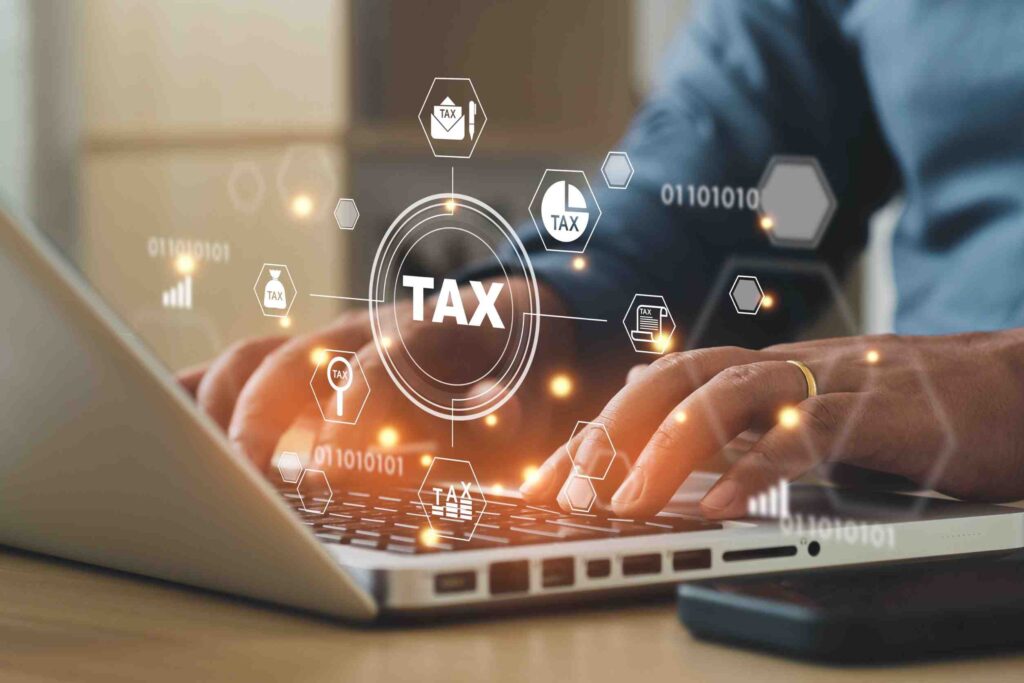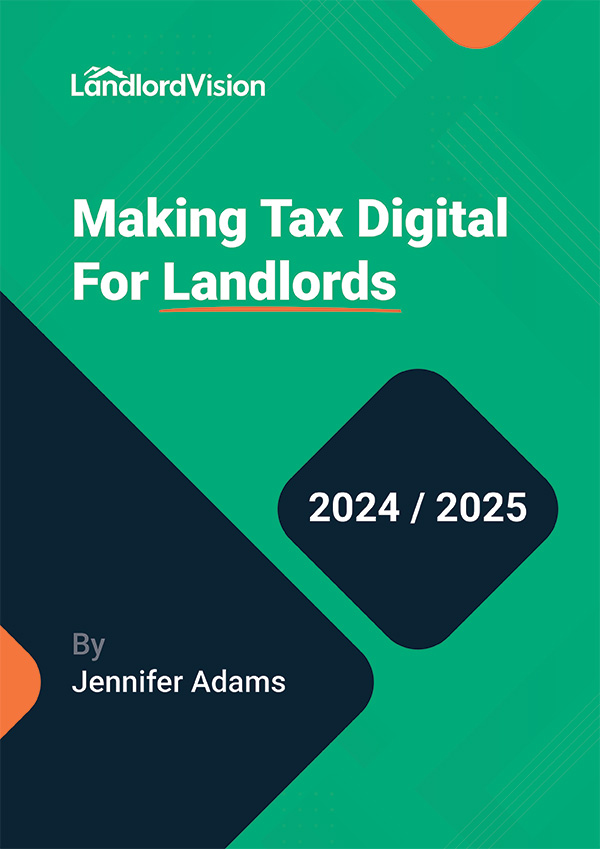
Managing finances and meeting tax deadlines can be a source of significant stress for landlords. However, Making Tax Digital aims to streamline the process and make it more efficient, offering a potential solution to this long-standing headache for landlords.
If you’ve got a drawer in your home stuffed full of invoices or Excel spreadsheets coming out of your ears, you could benefit from signing up for Making Tax Digital sooner rather than later.
The new Making Tax Digital deadline sounds a long way off now, but it will soon come around.
Digitising your record-keeping and tax submissions may sound like a chore, but what if we told you that it could save you time, improve accuracy, and help provide better financial forecasting?
This article will explain more about what Making Tax Digital means for UK landlords and the benefits of preparing for it now.
What is Making Tax Digital?

Chances are you’ve heard Making Tax Digital (MTD) mentioned on more than one occasion over the last few years, but do you know what it is and how it will affect you as a landlord?
Making Tax Digital is a government initiative that aims to digitise the tax system to make it easier for businesses and individuals to calculate taxes and keep accurate financial records.
MTD is being introduced in phases. Making Tax Digital for VAT took effect in 2019; however, most landlords are exempt from this. The rollout that landlords are waiting for is the Making Tax Digital for Income Tax Self Assessment (MTD ITSA).
MTD ITSA will require businesses and individuals to do the following:
- Keep digital records.
- Use HMRC-compatible and approved software.
- Submit updates every quarter.
- Submit a final annual declaration.
The MTD initiative was first announced in 2015, so it’s been a long time coming! Whilst some stages have already been rolled out, much of it is still to come as the dates keep getting pushed back.
When is Making Tax Digital Due to Come Into Effect?
Making Tax Digital for Income Tax Self Assessment was expected to come into effect in 2023/2024, but in late 2022 the government announced that this date would be pushed back.
Making Tax Digital for Income Tax will now be introduced on April 6th 2026 for those with an annual business or property income of more than £50,000.
For those with an annual business or property income of more than £30,000, Making Tax Digital won’t come into effect until April 2027.
The £50,000 and £30,000 thresholds apply to property income per taxpayer, not per property.
HMRC pushed back MTD ITSA to give self-employed individuals and landlords more time to prepare because of the challenging economic environment we are all currently facing.
These dates represent when MTD ITSA will be legislated, and anyone who fails to comply by then will be penalised. Nothing is stopping most landlords from digitising their taxes now, well before this deadline.
Does Making Tax Digital Apply to All Landlords?
Currently, only landlords earning £30,000 or more annually will be legally obligated to comply with MTD.
The phased introduction means landlords earning a property income of more than £50,000 have until April 2026 to comply, and those earning between £30,000 and £50,000 have until April 2027.
MTD digital will likely be rolled out to everyone eventually, and making the changes as soon as possible is in every landlord’s best interests.
Landlords with more than one property should enter all their property income under one account, not separately for each property.
For landlords that own a property jointly with a spouse, partner, or family member, each person that earns income must report that separately.
You may be able to apply for exemption from MTD if it is not practical for you to use software to keep digital records due to factors like your age, disability, or location. Or if your religious beliefs are incompatible with using electronic communications. You can find out more about applying for an MTD exemption on the government website.
Should Landlords Start Preparing for MTD Now?
There is no reason why landlords should delay preparing for Making Tax Digital. MTD aims to improve how landlords manage their finances and calculate their taxes, so getting ready ahead of the deadline will only benefit you.
Even if your property income is below the MTD threshold, it doesn’t mean it always will be. If your property income increases or the government changes the threshold to incorporate more people into MTD, it will pay to be prepared.
Some benefits of preparing for MTD early include the following:
- Save time on tax admin.
- Keep more accurate records.
- Make fewer errors when calculating tax.
- Access to real-time financial information.
- Reduce stress and anxiety about taxes.
Keeping digital records and submitting quarterly reports to HMRC will help landlords better understand their cash flow position and allow them to make more informed financial decisions. Digitising your accounting also helps to reduce human error, saving you lots of time and hassle on correcting mistakes.
Changing how you record your accounts may seem inconvenient, especially if you’ve been making paper submissions for many years. However, the long-term gains significantly outweigh the short-term pain of learning a new way of doing things.
What Does Making Tax Digital Require Landlords to do?
The main requirement of MTD is that landlords will need to move away from paper-based tax returns and instead submit information about their income and make tax submissions to HMRC digitally.
Use MTD-compatible Software
To do this, you will need to use MTD-compatible software like Landlord Vision. Find out more about using Landlord Vision for MTD.
You can find information on the government website about which software is MTD-compatible. To be compatible, the software must be able to maintain records as required by the MTD regulations, prepare and send quarterly updates, finalise your income after the tax year’s end, and digitally communicate with HMRC using APIs to submit all required information.
Keep Digital Records
You will then use your MTD-compatible software to keep accurate digital records of all your property income and expenses. That means no more rifling through boxes of receipts and invoices or struggling with Excel formulas.
Submit Quarterly Updates
Every quarter, landlords will be required to use their software to digitally submit a record of their income and expenses for that period to HMRC.
Submit an Annual Final Declaration
Before the end of each tax year, landlords will need to use their software to generate and digitally submit an end-of-period statement and final declaration to HMRC.
That’s it. Choose the right software, and MTD should make managing your income, expenses, and tax submissions much simpler and more organised.
What Can Landlords do to Prepare for MTD?
If you haven’t yet begun to prepare for Making Tax Digital, there’s no time like the present!
Preparing for MTD isn’t complicated and will save you time and simplify the process in the long run.
Here’s how to get prepared in just a few simple steps.
Sign up for Software
The MTD changes all centre around digitising your records and tax submissions, so the first thing you’ll need to do is find the right software to help you do this. Ensure that the software you choose is MTD-compatible and that you feel comfortable using it.
When you choose Landlord Vision, you can book a demo and sign up for a 14-day free trial to see how it works before you commit.
Familiarise Yourself with the Software
Once you’ve found the right software for you, you can begin using it to keep a digital record of your income and expenses straight away. Take some time to familiarise yourself with the features and functions of the software and think about how they can help you to work more efficiently.
Set Aside Time in Your Schedule for Bookkeeping
Under MTD, you must submit an update to HMRC every quarter. If you usually find yourself scrambling to pull your figures together for your tax return at the last minute, then now is a good time to change that and get more organised with your bookkeeping. Rather than leaving your bookkeeping until the end of each quarter, or even the end of each month, implement a system whereby you are inputting your income and expenses more regularly. This way, you will always be on top of your finances, and there will be no last-minute rush or stress.
Digitise Paper Documents
MTD requires you to upload copies of paperwork like receipts and invoices, so it’s a good idea to get into the habit of digitising your paperwork now. There are plenty of benefits to digitising your paperwork too, like increased security, better organisation, easy search and retrieval, and a decreased chance of losing them!
Sign up for MTD
Most landlords can sign up for MTD ITSA voluntarily before the deadline date to begin taking advantage of the benefits of going digital as soon as possible.

Prepare now for a Seamless MTD Transition
The digitisation of tax returns seems inevitable in a world where going paperless is becoming the norm.
Making Tax Digital is essential for a more streamlined, transparent, and efficient tax management system. It will bring the tax system closer to real-time and help landlords to get their taxes right the first time.
The benefits of embracing this digitalisation far outweigh any potential challenges, and landlords who embrace the change and adopt digitalisation early will reap the benefits.
Proactively preparing for the changes now will also help landlords to ensure a seamless and successful transition to digitalisation when the deadline arrives.



